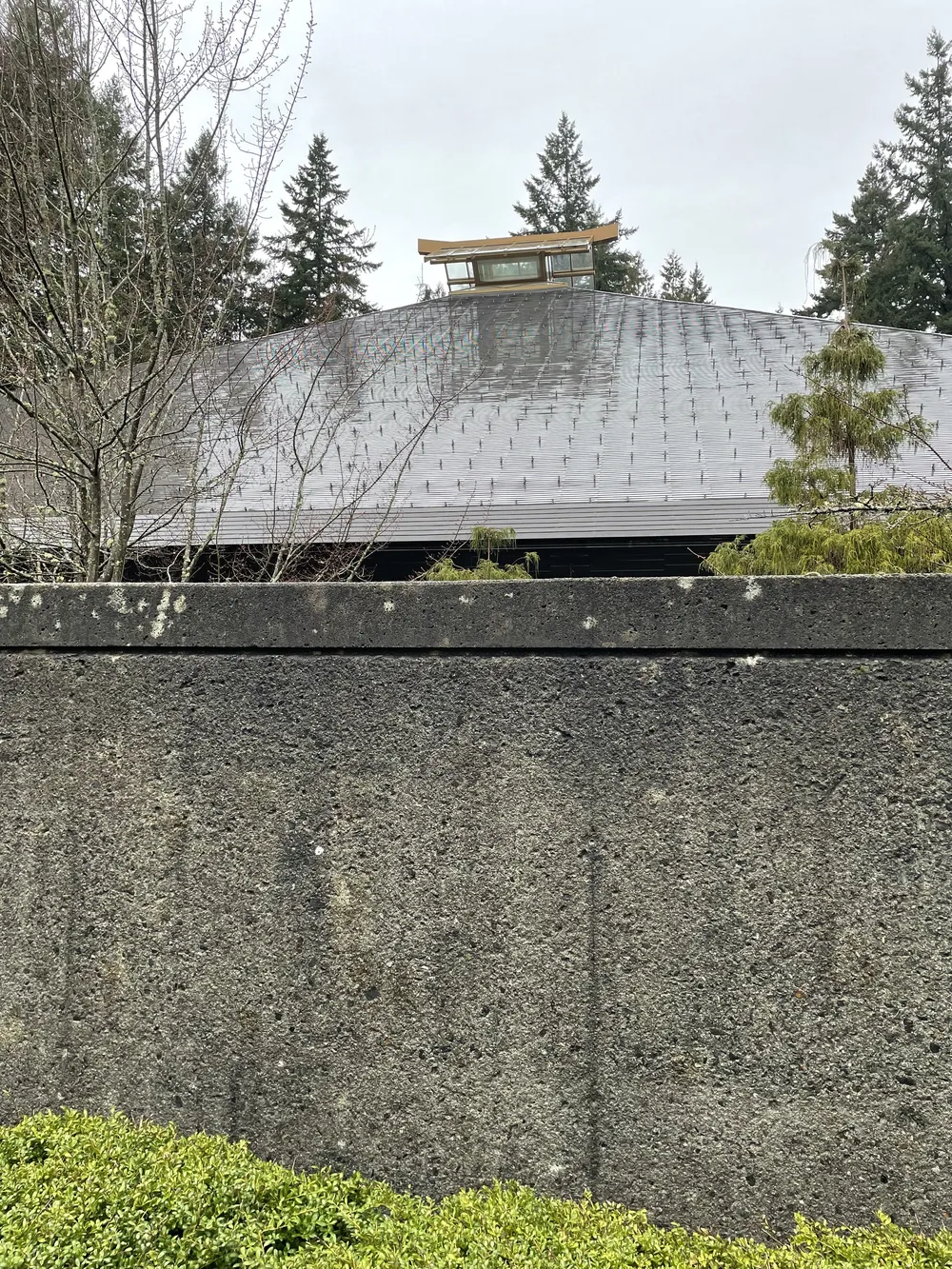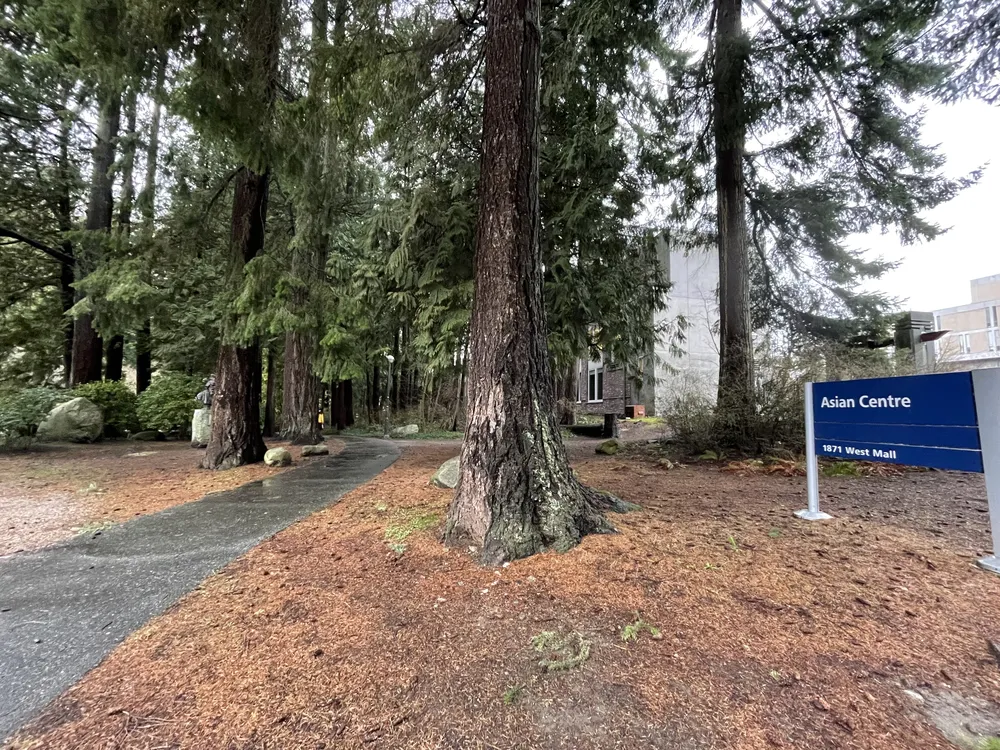I first found out about the Asian Centre for an entirely non-academic reason. A club that I was a part of had used the auditorium as a meeting space, totally unrelated to Asian Studies.
My experience with using the Asian Centre as a quiet study space might not be uncommon — and it’s not entirely surprising — as the Centre is tucked away in a far corner of UBC, between the Nitobe Memorial Garden and the C.K. Choi Building (close to the UBC School of Music) near Northwest Marine Drive. The building is also shrouded from the view of the public. A concrete wall conceals one side of the building and the path to the front doors is obscured by trees.
But none of that should get in the way of recognizing the importance of the Asian Centre as a hub of history, diversity and resources. After some digging and exploring, I present to you: the Asian Centre.
Origins: The power of persuasion
On my first visit to the Asian Centre, I strolled along Memorial Road until I was met with this view (although keep in mind, I may be shorter than the majority of folks who plan to visit).
Beyond that concrete wall is the roof of the Asian Centre, and it has a history of its own.
According to A big idea, a 1982 film by Bianca Barnes, while attending Expo ‘70 in Osaka, Japan, the Sanyo Pavilion caught the eye of Dr. Shotaro Iida, an assistant professor in UBC’s department of Religious Studies. Desiring a building that would house the Asian Library and mark the location of Nitobe Memorial Garden, he marched up to the pavilion’s director and asked if the director would gift the pavilion to UBC. At this point, Dr. Iida had no idea whether UBC would accept such a gift.
However, his presumptuousness paid off, and the Sanyo Pavilion roof arrived in Vancouver in 1971. Construction of the Asian Centre began in 1974.
A celebration of Asia and Asian heritage
The Asian Centre opened in 1981, and since then it has been an important location for those learning about and researching Asia and Asian heritage. As of June 2020, its library had 710,000 volumes of Asian-language holdings in ten languages, and it provides access to rare materials which are available digitally in the UBC Open Collections.
Besides being so rich in physical and digital resources, what really stands out to me is the Asian Centre’s focus on community engagement. The Centre expresses a deep sense of community through its various exhibits and programming created in collaboration with students, researchers and community members.
Prior to COVID-19, the Asian Studies department co-hosted a Lunar New Year celebration which included performances such as Lion Dance and K-pop Dance, and cultural activities such as Cantonese Mahjong and the opportunity to try on Korean traditional clothing, Hanbok.
The Centre has also hosted Diwali (Festival of Lights) celebrations, inviting the community to experience Indian culture through music, Henna and refreshments.
With many regular lectures and workshops, the Centre celebrates more than just Asian holidays. As this school year enters its final few weeks, there are events to look forward to in the months that follow. In May, the Centre will be hosting Weaving Femininity into Mysticism: Rereading Parvīn Iʿtiṣāmī’s “God’s Weaver."
The Centre today (and how to get there)
The Asian Centre can be reached from the east side of campus by continuing along Memorial Road. If you keep heading west, you should reach a nondescript blue sign.
Turn onto the path that leads into the trees, and continue past the bust.
Turn left after the bust, and this is what you’ll see:
Look at that warm glow through the windows!
For its 60th anniversary, the department of Asian Studies posted a series of photos accompanied by anonymous testimonials from students, and I thought it fitting to hear from those who have spent more time at the Asian Centre than myself.
In the testimonials, one student stated the Centre was quieter than most buildings, and a good place to chat with language exchange partners in Japanese and Korean.
Echoing their sentiments about the Centre’s appealing peace, a second student drew attention to its “serene environment,” adding that they often went there to study and read books related to Chinese literature and history. They went on to say, “After lunch, I often study and chat with my friends together at Asian Centre, which are my cherished memories.”
So there you have it. The Asian Centre exists, and it is thriving as a meeting place for students from all over the world to learn about different cultures. So check it out one day! Just make sure not to disrupt the students studying, researching and engaging with one another within its storied walls.
Asian Studies department resources:
- Asian-language research guides
- Asian Studies open collections
- Asian Library events
- Revisit the history of Asian-Canadians:
- Book the Asian Centre
Share this article
First online









